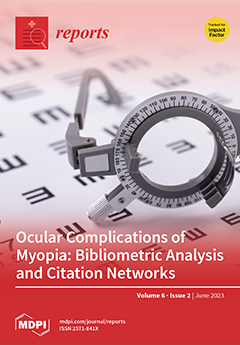Open AccessCase Report
Secondary Adrenal Insufficiency Due to Isolated ACTH Deficiency Induced by Pembrolizumab: A Report of Two Cases of Uterine Endometrial Cancer
by
Ichiro Onoyama, Minoru Kawakami, Kazuhisa Hachisuga, Shoji Maenohara, Keisuke Kodama, Hiroshi Yagi, Masafumi Yasunaga, Tatsuhiro Ohgami, Kazuo Asanoma, Hideaki Yahata, Yuya Kitamura, Ryuichi Sakamoto, Daisuke Kiyozawa and Kiyoko Kato
Viewed by 1485
Abstract
Immune checkpoint inhibitors (ICIs) enhance antitumoral immune mechanisms and are used to treat various types of solid tumors including those that are microsatellite instability (MSI)-high. Uterine endometrial cancer is one of the most frequent tumor types that shows MSI-high, and, consequently, opportunities to
[...] Read more.
Immune checkpoint inhibitors (ICIs) enhance antitumoral immune mechanisms and are used to treat various types of solid tumors including those that are microsatellite instability (MSI)-high. Uterine endometrial cancer is one of the most frequent tumor types that shows MSI-high, and, consequently, opportunities to use ICIs for endometrial cancer treatment are increasing. While using ICIs, it is important to monitor and manage various immune-related adverse events (irAEs). Here, we report two cases of secondary adrenal insufficiency during treatment of endometrial cancer with pembrolizumab. Both cases showed appetite loss and general fatigue after the 6th or 12th cycle of pembrolizumab. They were admitted to our hospital because of remarkable hyponatremia. Both cases showed no adrenocorticotropic hormone (ACTH) or cortisol response to CRH loading tests. Other pituitary hormone levels were normal, and MRI revealed no sign of hypophysitis in either patient. They were diagnosed with secondary adrenal insufficiency due to isolated ACTH deficiency and recovered soon after the administration of hydrocortisone and hydration. Thus, we should be aware of irAEs with the use of ICIs. In particular, adrenocortical insufficiency is sometimes lethal without appropriate treatment. Because the clinical symptoms are fatigue, appetite loss, and nausea, patients might be misjudged to have symptoms related to cancer. Checking serum morning cortisol before ICIs use and monitoring serum sodium levels could provide clues to diagnose secondary adrenal insufficiency.
Full article
►▼
Show Figures




